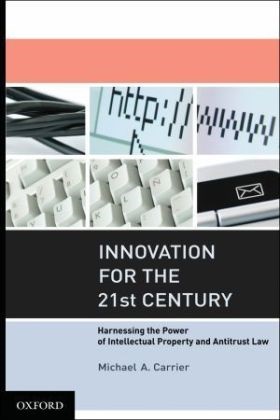En savoir plus
Provides an excellent primer on antitrust, IP, and innovation. [Carrier] synthesizes the legal and economic foundations, contours, and controversies in an accessible fashion. I applaud him for doing this because frankly, it is tough to do given that the fields are quite technical and specialized. The book really is appropriate for a general audience. Informationen zum Autor Michael Carrier is Professor of Law at Rutgers University School of Law. He teaches and writes in the areas of antitrust, intellectual property, and property law. His work has recently appeared in the Stanford Law Review, University of Pennsylvania Law Review, Duke Law Journal, Vanderbilt Law Review, and Minnesota Law Review. Klappentext In recent years, innovation has been threatened by the United States legal system. Much of the blame can be attributed to the antitrust and intellectual property laws. Innovation for the 21st Century seeks to reverse this trend, offering ten revolutionary proposals, from pharmaceuticals to peer-to-peer software, to help foster innovation. Michael A. Carrier illustrates the benefits of improving the patent system and incorporating innovation into copyright and antitrust law. He also dips into a rich business literature to import ideas on "disruptive innovation" and "user innovation." And he replaces the 20th-century view that the IP and antitrust laws are in conflict with a new 21st-century framework that treats them as collaborators. Innovation for the 21st Century: Harnessing the Power of Intellectual Property and Antitrust Law provides a comprehensive framework for the patent, copyright, and antitrust laws to promote innovation. Zusammenfassung In recent years, innovation has been threatened by the United States legal system. Much of the blame can be attributed to the antitrust and intellectual property laws. Innovation for the 21st Century seeks to reverse this trend, offering ten revolutionary proposals, from pharmaceuticals to peer-to-peer software, to help foster innovation. Michael A. Carrier illustrates the benefits of improving the patent system and incorporating innovation into copyright and antitrust law. He also dips into a rich business literature to import ideas on "disruptive innovation" and "user innovation." And he replaces the 20th-century view that the IP and antitrust laws are in conflict with a new 21st-century framework that treats them as collaborators. Innovation for the 21st Century: Harnessing the Power of Intellectual Property and Antitrust Law provides a comprehensive framework for the patent, copyright, and antitrust laws to promote innovation. Inhaltsverzeichnis Introduction Part I Innovation Intellectual Property Antitrust IP-Antitrust Intersection Part II Better Patents Less Dangerous Patents Biotechnology Bottlenecks Pioneering Peer-to-Peer Interoperable DMCA Innovation Markets Standards Organizations Pharmaceutical Settlements Conclusion Index ...

